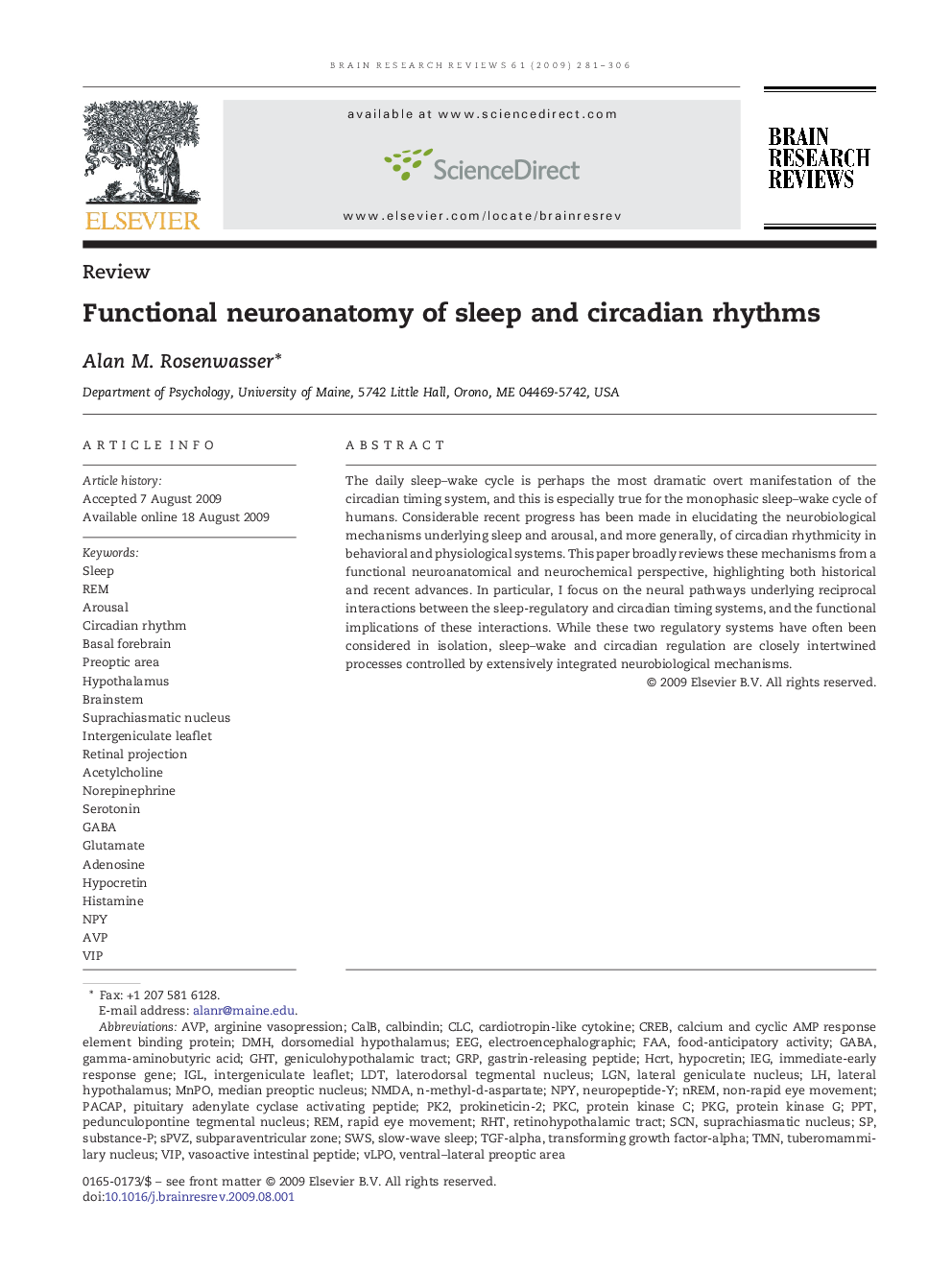| Article ID | Journal | Published Year | Pages | File Type |
|---|---|---|---|---|
| 4333743 | Brain Research Reviews | 2009 | 26 Pages |
The daily sleep–wake cycle is perhaps the most dramatic overt manifestation of the circadian timing system, and this is especially true for the monophasic sleep–wake cycle of humans. Considerable recent progress has been made in elucidating the neurobiological mechanisms underlying sleep and arousal, and more generally, of circadian rhythmicity in behavioral and physiological systems. This paper broadly reviews these mechanisms from a functional neuroanatomical and neurochemical perspective, highlighting both historical and recent advances. In particular, I focus on the neural pathways underlying reciprocal interactions between the sleep-regulatory and circadian timing systems, and the functional implications of these interactions. While these two regulatory systems have often been considered in isolation, sleep–wake and circadian regulation are closely intertwined processes controlled by extensively integrated neurobiological mechanisms.
